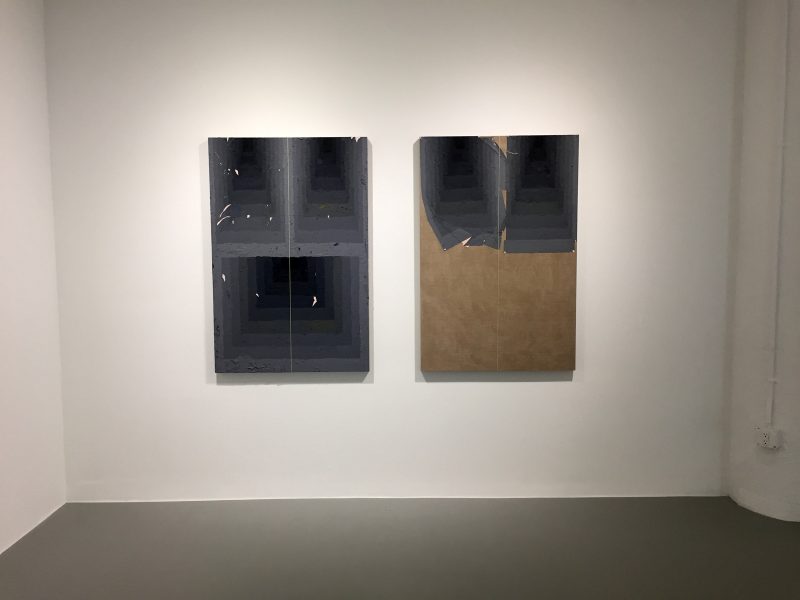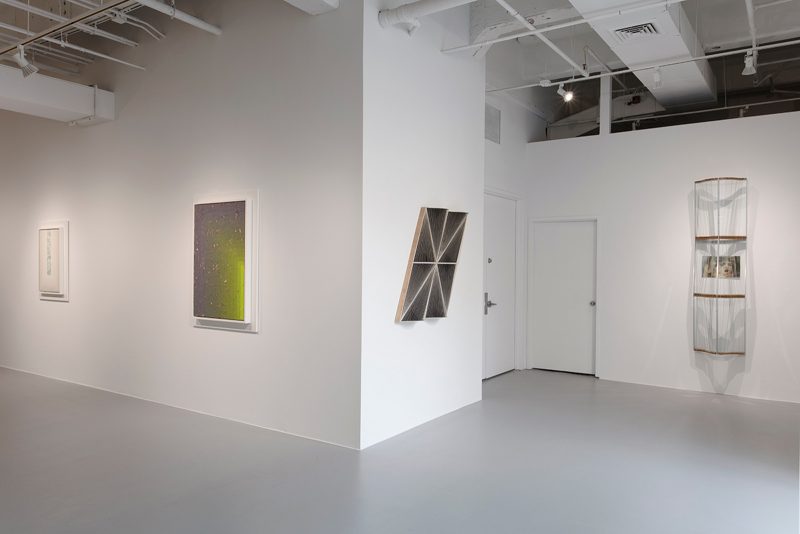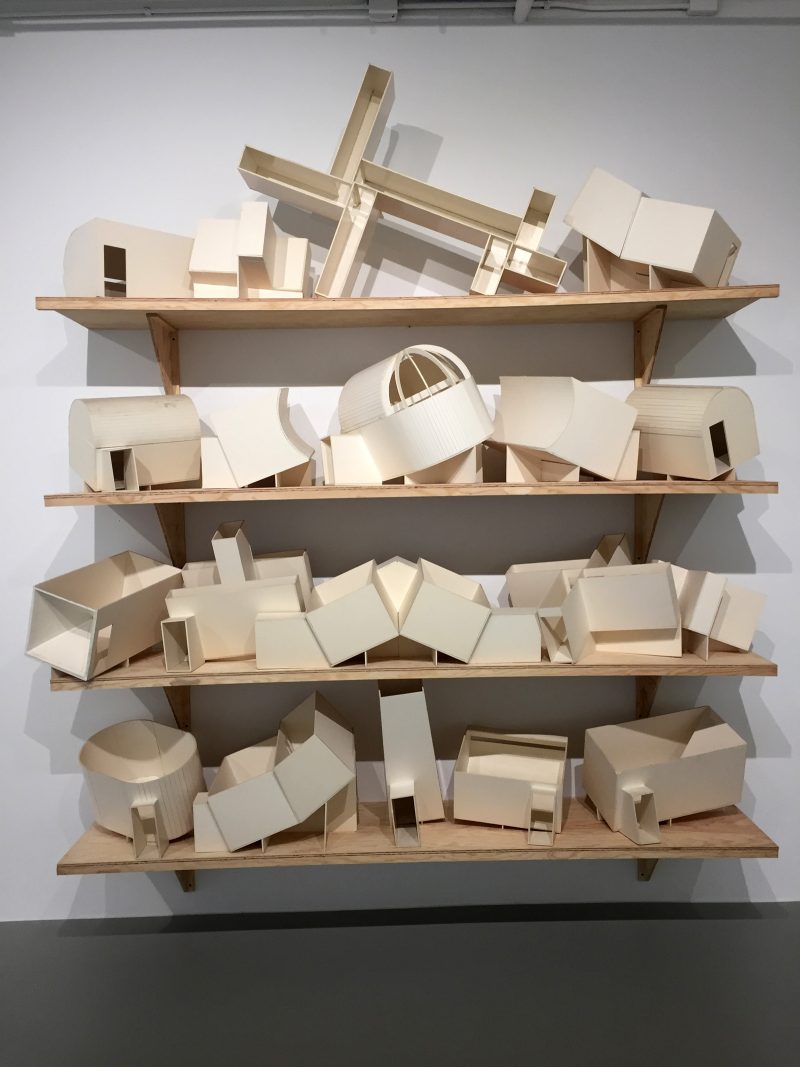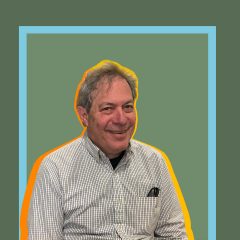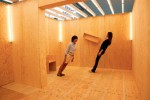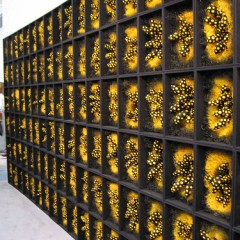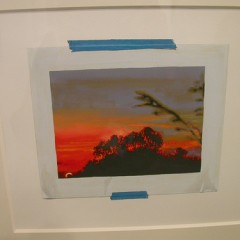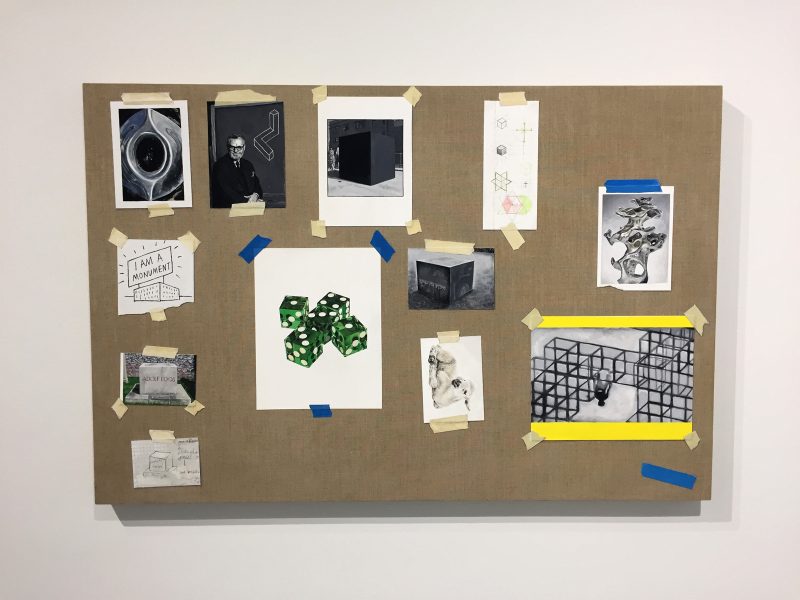
The work of Julian Hoeber is heady without being stiff. Hoeber draws on architectural and philosophical influences, and creates dialogues with other artists, while maintaining a whimsy that keeps the work playful and inviting. Moving between such different materials and techniques as collage, paint, string, cement, and epoxy his solo exhibition at Rosenwald-Wolf Gallery captures that breadth, without losing any depth.
In the main entrance area of the gallery, one work sets the tone for the exhibition: “The Mystery of Cubes and the Wonder of Soft Forms” (2014-17). This trompe l’oeil collage painting which looks as if it is made up of paintings – such as a sheep and a pile of playing dice – taped on to a linen backing, instead confounds the eye with its hyper-realist examination of the mundane. Here, and throughout his work, the artist elects to explore shape and form through everyday objects and creatures, and presents this exploration as an artwork in itself. In doing so, Hoeber creates layers of connections. This set me up for what to expect as I explored the rest of the artworks on view.
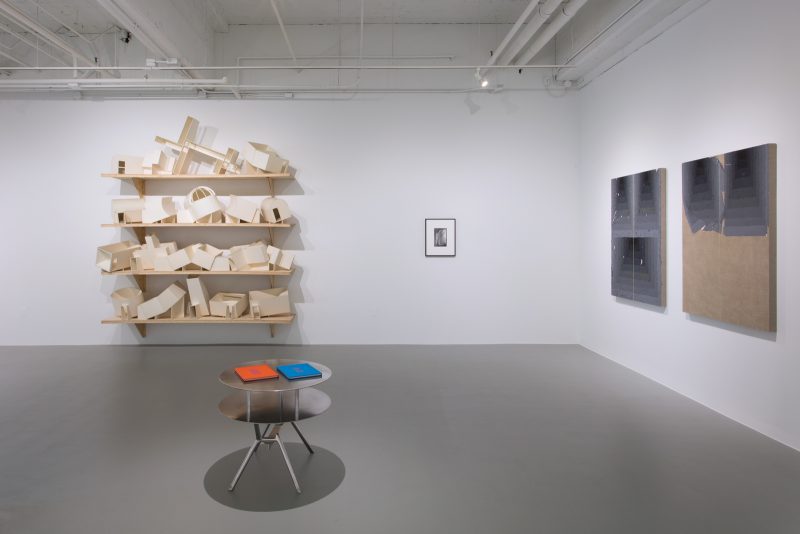
“Architectural Models” and the nearby “Brutalist Dollhouse (Transitional Object)” (2017) are small sculptures that embody the formal investigations of the above-mentioned collage painting: they are very geometric, but also have a roundness and organic quality. It felt to me as if the dollhouse was some mystical concrete form that had grown from the earth. These 3D objects take a softer approach to Constructivism, and have a fascinating minerality about them – neither plant nor totally inorganic compound.
The “Execution Changes” paintings in the back of the gallery have a Fluxus feel to them. To make the geometric abstract works, Hoeber goes through a series of steps to achieve a final, layered product – like the artists of the 1970s who focused on process and conducted “event scores” – performances made of a series of steps. The geometry of these paintings is also reminiscent of Sol Lewitt’s wall drawings – yet another art historical reference that Hoeber has adapted for his own use. To my delight, these two works are not simply mounted on the wall, but housed in two carved out holes in the partition wall that cradles them, allowing you to see the front of the paintings in the main gallery, and the backs of the paintings by climbing the three steps to the back gallery. This presentation especially exciting because it is something never done before with these works, but which the artist has always wanted, and that the Rosenwald-Wolf Gallery was able to accommodate. The fact that these severe geometric paintings had more playful backs (featuring collaged faces and drawn-on smiles) was completely unexpected, and made me smile. This alcove of the gallery also has another trompe l’oeil collage, “A Head of the Game” (2017-18); and a sculptural installation, “Compound Curved Wall” (2015). This area is perhaps my favorite of the entire show. I spent a long while with “A Head” – studying its facial features, noticing the Frank Stella-like forehead, the axe of a mouth, and the playground nose. Despite the clear play in the combination of parts, the overall piece still struck me as strangely melancholic. Perhaps “Compound Curved Wall,” a fiberglass and cement sculpture reminiscent of a Richard Serra, had something to do with it. The grey, snake-like curve of the piece was threatening – adding intrigue to the experience of looking.
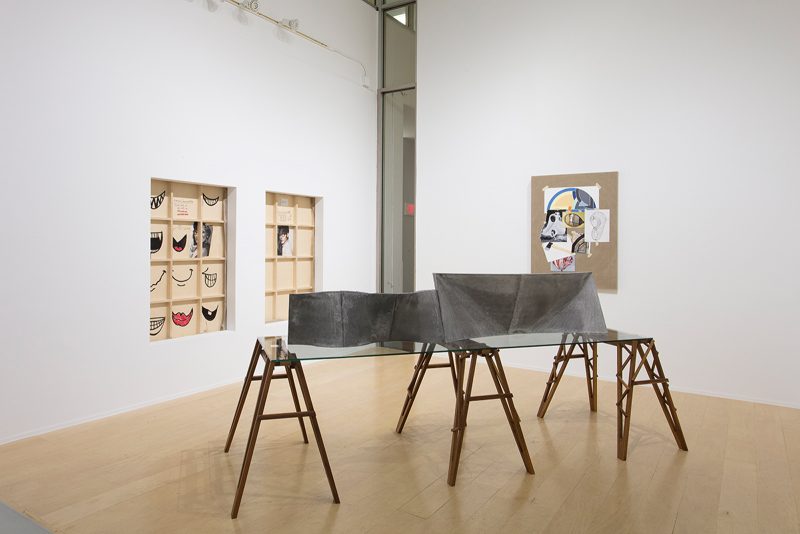
The abundance of echoes of other artists and movements creates a danger of Julian Hoeber being an artist who is defined by his relation to others. However, I found that to not be the case. Despite my various associations already named here, the exhibition has a distinctive cohesiveness and individuality: the playful nods to history are twisted into a sublime architecture that leaves me feeling delighted and confused in a unique way. In the gallery, I was caught mid-fall down the rabbit hole – unable to figure out my shape and size compared to all of these new somethings around me. I was distinctly separate from the work, but kept trying to look closer and closer – to find the doorway into the Dollhouse as if it were a home I could occupy. Hoeber’s art is a fascinating conglomeration of materiality and dimension – a layered smorgasboard of in-betweenness. To try to define it in any more concrete of a way would be to try to box in work that is, at its core, “off-kilter” and “paradoxical” – as described in the show’s press release.
As if he knows this (surely he must, and must revel in it), Hoeber has given himself a place in the exhibition. In the gallery’s window that overlooks Broad Street, Hoeber looks down from the corner, as “Self-Portrait as Crown Molding” (2017), a chunky little piece of dry-wall, plaster and lathe positioned just about where you’d find the architectural detail in a fancy room. At first glance this piece seems like an oddly-asymmetrical feature of the gallery. However, it is of course an intentional architectural quirk – a kind of art Easter egg that, when viewed from a certain angle, is distinctly a profile gazing down from some not-quite heavenly place. Hoeber as Crown Molding can see viewers as we enter and exit the gallery, and quietly sum us up as we do the same of his work.
In the end, it seems, we are are a part of this strange architecture after all.
Julian Hoeber
Rosenwald-Wolf Gallery at the University of the Arts
August 3 – September 13, 2019
More Photos
